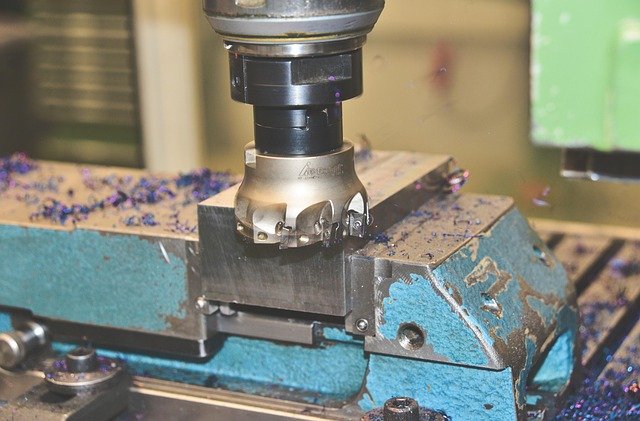Welding Technology: Powering Modern Industry
Discover the transformative impact of cutting-edge welding machines across industries. From construction to aerospace, these innovative tools are revolutionizing metal joining processes with unparalleled precision and efficiency. Explore how advanced welding technology is shaping the future of manufacturing, enhancing productivity, and pushing the boundaries of what's possible in metal fabrication.

Welding machines have become the backbone of numerous industries, playing a crucial role in shaping our modern world. These innovative tools have evolved significantly, offering a wide range of capabilities to meet diverse industrial needs. Let’s delve into the world of welding technology and explore its various aspects.
Types of Welding Machines
-
Stick Welders: Also known as Shielded Metal Arc Welding (SMAW) machines, these are versatile and widely used for their simplicity and effectiveness in various conditions.
-
MIG Welders: Metal Inert Gas (MIG) or Gas Metal Arc Welding (GMAW) machines offer ease of use and produce clean welds, making them popular in many applications.
-
TIG Welders: Tungsten Inert Gas (TIG) welding machines provide high-precision results, ideal for thin materials and applications requiring superior finish quality.
-
Plasma Cutters: While not strictly welding machines, these tools complement welding operations by precisely cutting metal using ionized gas.
-
Spot Welders: These specialized machines create welds at specific points, commonly used in automotive manufacturing for sheet metal work.
The Science Behind Welding
Welding machines operate on a fundamental principle: generating intense heat to melt and fuse metal pieces. Here’s a breakdown of the process:
-
Power Supply: Machines convert electrical power from outlets or generators into suitable current and voltage for welding.
-
Electrode Usage: In arc welding, an electrode conducts electricity, creating an arc between itself and the workpiece.
-
Heat Generation: The electrical arc produces temperatures up to 6,500°F (3,600°C), melting the metal at the weld point.
-
Filler Application: Many welding processes incorporate filler material to reinforce the weld and bridge gaps between joined pieces.
-
Protective Measures: Shielding gases or flux protect the molten metal from atmospheric contamination during the welding process.
-
Weld Formation: As the heat source is removed, the molten metal cools and solidifies, forming a strong bond between the welded pieces.
Selecting the Right Welding Machine
Choosing an appropriate welding machine depends on several key factors:
-
Material Compatibility: Different metals require specific welding techniques and equipment.
-
Material Thickness: Thicker materials generally demand more powerful machines with higher amperage outputs.
-
Power Requirements: Consider whether standard household power suffices or if industrial three-phase power is necessary.
-
Mobility Needs: For on-site welding, compact and lightweight machines offer greater convenience.
-
Operational Capacity: The duty cycle indicates how long a machine can weld continuously before cooling down is required.
-
Financial Considerations: Balance your needs with budget constraints when selecting from a range of basic to advanced models.
-
Advanced Features: Some machines offer specialized functions like pulse welding or multi-process capabilities, which may be beneficial for certain applications.
Prioritizing Safety in Welding Operations
Welding carries inherent risks, making safety precautions crucial:
-
Protective Gear: Always use appropriate Personal Protective Equipment (PPE), including welding helmets, heat-resistant gloves, and safety footwear.
-
Proper Ventilation: Ensure adequate air circulation to remove harmful fumes and gases produced during welding.
-
Fire Prevention: Keep fire extinguishers readily available and clear the welding area of flammable materials.
-
Electrical Safety: Regularly inspect and maintain cables, connections, and grounding systems.
-
Operator Training: Proper education and training are essential for safe and effective welding machine operation.
-
Eye Protection: Use welding helmets with appropriate filters to shield eyes from harmful UV and infrared radiation.
-
Organized Workspace: Maintain a clean, dry, and obstacle-free welding area to prevent accidents.
Enhancing Manufacturing Efficiency
Welding machines significantly contribute to manufacturing efficiency:
-
Automation Integration: Modern welding machines can be incorporated into automated production lines, boosting speed and consistency.
-
Versatile Functionality: Multi-process machines reduce the need for separate equipment, streamlining operations.
-
Precise Control: Advanced welding machines offer exact parameter control, ensuring consistent quality and minimizing waste.
-
Performance Monitoring: Some machines feature data logging capabilities for quality control and process optimization.
-
Energy Conservation: Inverter-based welding machines offer improved energy efficiency compared to older transformer models.
-
Rapid Reconfiguration: Programmable machines can store settings for different tasks, reducing setup time between jobs.
-
Superior Weld Quality: Advanced features like pulse welding improve results and reduce post-weld finishing requirements.
As industry demands evolve, welding technology continues to advance. From basic arc welders to sophisticated robotic systems, these tools remain indispensable for metal joining across countless applications. The ongoing development of welding machines will undoubtedly play a pivotal role in shaping future manufacturing capabilities and industrial advancements.






